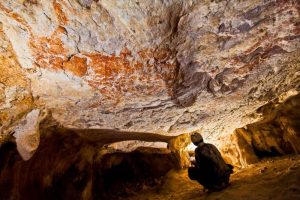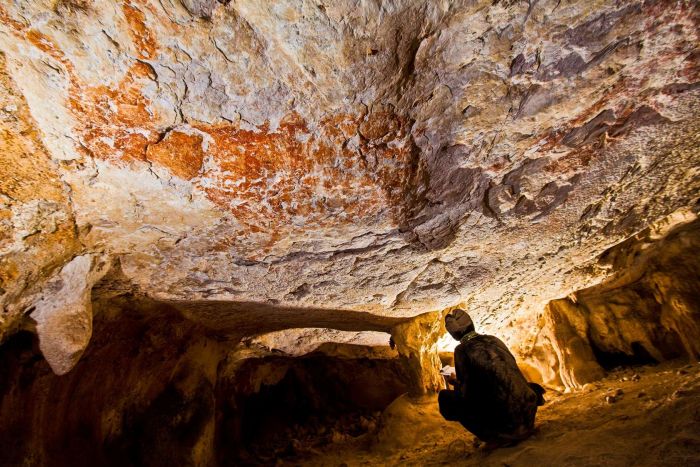The scholarly journal Nature recently posted a paper on the world’s oldest-known animal cave art, painted at least 40,000 years ago in Borneo.
The paper starts:
Figurative cave paintings from the Indonesian island of Sulawesi date to at least 35,000 years ago (ka) and hand-stencil art from the same region has a minimum date of 40ka
1
. Here we show that similar rock art was created during essentially the same time period on the adjacent island of Borneo. Uranium-series analysis of calcium carbonate deposits that overlie a large reddish-orange figurative painting of an animal at Lubang Jeriji Saléh—a limestone cave in East Kalimantan, Indonesian Borneo—yielded a minimum date
of 40ka, which to our knowledge is currently the oldest date for figurative artwork from anywhere in the world. In addition, two reddish-orange-coloured hand stencils from the same site each yielded a minimum uranium-series date of 37.2ka, and a third hand stencil of the same hue has a maximum date of 51.8ka. We also obtained uranium-series determinations for cave art motifs from Lubang Jeriji Saléh and three other East Kalimantan karst caves, which enable us to constrain the chronology of a distinct younger phase of Pleistocene rock art production in this region. Dark- purple hand stencils, some of which are decorated with intricate motifs, date to about 21–20ka and a rare Pleistocene depiction of a human figure—also coloured dark purple—has a minimum date of 13.6ka. Our findings show that cave painting appeared in eastern Borneo between 52 and 40 ka and that a new style of parietal art arose during the Last Glacial Maximum. It is now evident that a major Palaeolithic cave art province existed in the eastern extremity of continental Eurasia and in adjacent Wallacea from at least 40 ka until the Last Glacial Maximum, which has implications for understanding how early rock art traditions emerged, developed and spread in Pleistocene Southeast Asia and further afield.
Read the entire paper here:
https://www.nature.com/articles/s41586-018-0679-9.

